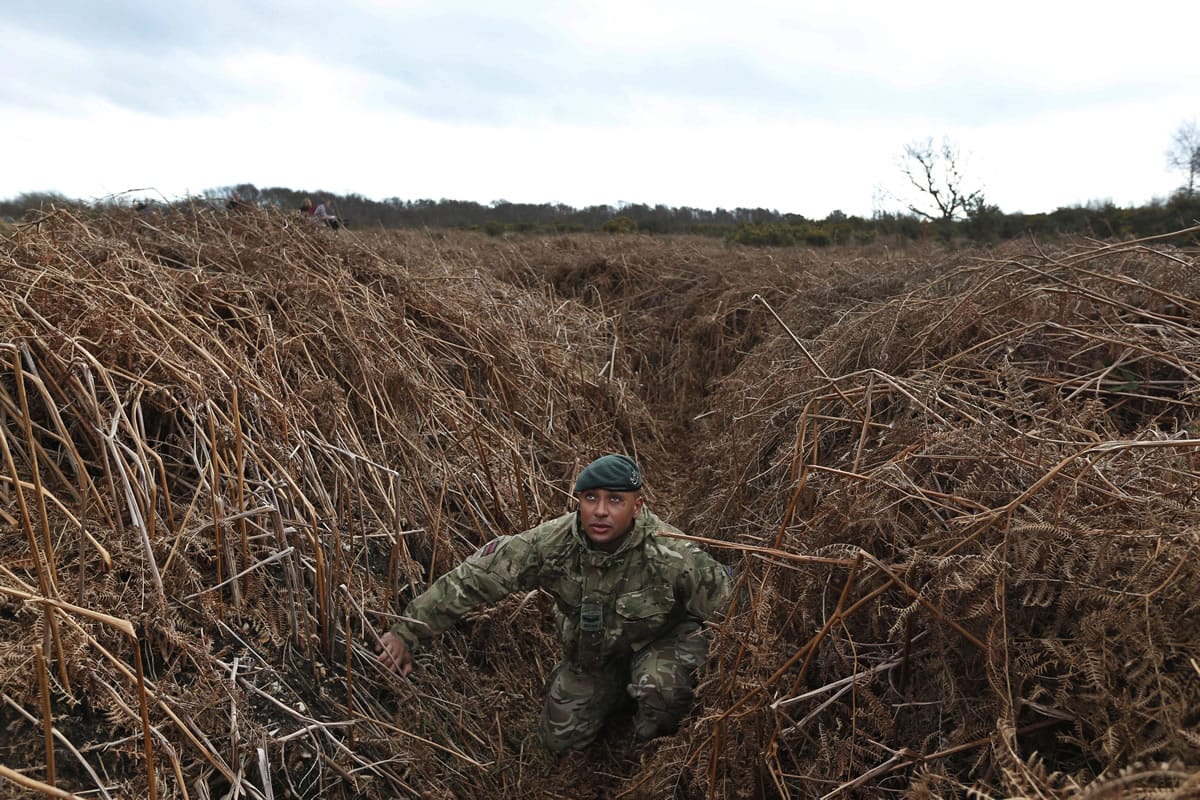GOSPORT, England — Two lines of trenches face off across No Man’s Land. A soldier marches, rifle in hand, along a ditch. These are instantly familiar images of World War I — but this is Britain, a century on and an English Channel away from the battlefields of the Western Front.
This overgrown and oddly corrugated patch of heathland on England’s south coast was once a practice battlefield, complete with trenches, weapons and barbed wire. Thousands of troops trained here to take on the German army. After the 1918 victory — which cost 1 million Britons their lives — the site was forgotten, until it was recently rediscovered by a local official with an interest in military history.
Now the trenches are being used to reveal how the Great War transformed Britain — physically as well as socially. As living memories of the conflict fade, historians hope these physical traces can help preserve the story of the war for future generations.
“We’ve now lost our First World War veterans. You’re not going to get a firsthand account,” said Richard Osgood, an archaeologist with the Ministry of Defense, which owns the land. “In many ways, the truest witness is the archaeology and the legacy left behind.”
The trenches, near the town of Gosport, about 80 miles south of London, were rediscovered a few months ago by Robert Harper, head of conservation at the local council. A military history buff, he noticed some crenellated lines on a 1950s aerial photograph of the area, and was startled to recognize the pattern of “the classic British trench system.”
He was even more surprised when he had a look at the land — a local picnic spot — and found the contours of the trenches still clearly visible under a thick covering of bracken, gorse and grass. He could make out a front-line trench and several reserve rows, along with communications trenches and forward observation posts. And then there was an opposing set, 300 yards (meters) away.
“It was one of those jaw-dropping moments,” Harper said.
“I’ve got five relatives buried on the Western Front. I think to myself, `Did any of them train here?”‘
Several other sets of practice trenches have been found in Britain, but this is easily the most extensive. Conservation body English Heritage, which announced the find Friday, said the task of mapping and documenting the site has just begun. There were no immediate plans to turn it into a tourist site or build a museum around it.
The discovery is already providing ammunition for those who reject the “lions led by donkeys” view of the war, which argues that incompetent officers led ill-prepared troops into needless slaughter.
Historian Dan Snow said the elaborate mock battlefield “shows how seriously they took the business of training.”



